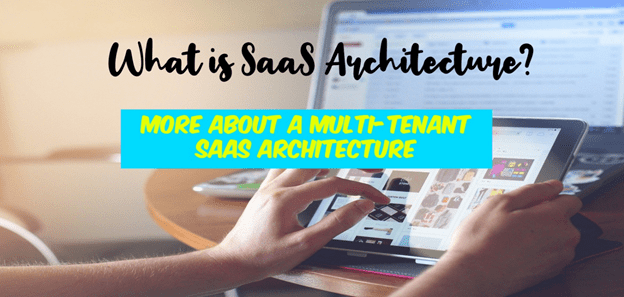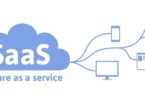
What is SaaS architecture?
What is SAAS?
SAAS (Software as a Service) is revolutionizing the way companies work. It is software or an application that is hosted in the cloud. Customers can access this software using the internet. Today, SAAS has become the integral delivery model for most businesses.
Most of the users prefer moving to the SAAS model as it is easy to access and eliminates the hardware cost, licensing fees, and maintenance charges. This helps organizations leave behind the challenges in implementing software solutions that they need on a daily basis and concentrate more on their business.
SAAS Business-to-Business software is solutions that help other businesses. They make work easier for other companies by automating internal functions.
Advantages of using SAAS
- SAAS models are a huge boon when it comes to saving time. You get to use the product instantly. All that you will have to do is signup for the product. Ideally, building the same product would have taken days or even months to build, depending on your resource.
- It is easy to understand and use. All the companies provide online help or support that handhold you into learning the product.
- There is no upfront hardware or license costs when it comes to SAAS. Most of the SAAS companies offer a pay as you go pricing model. This gives you the luxury to cancel your subscription at any time.
- SAAS tools offer easy integration with other resources, this makes data migration easy for you.
- SAAS companies have a large customer base. This means they constantly develop new features to satisfy the requirements of their customers. You as a user of their product also get to access these features.
- Since SAAS is hosted on the internet, you can access it anytime on the go.
SAAS Development Life Cycle
The SDLC for SaaS tech-stack products are very much different from the regular software life cycle. A lot of thought must be put into every stage of the life cycle. For a SaaS architecture, there are 5 phases of the software development life cycle.
Envision
In this phase, the business owner will have to identify the opportunity in the market and decide what problem the business is going to solve. You will have to build the foundation of your business in this phase.
They will also have to decide how they are going to pitch the product to their customers. The long-term and short-term goals for the product must be decided in this phase. The Business owners will have to find out the current need, decide how to build the product.
Platform Evaluation
Once you have an idea, you need to bring that to reality. Most of the time that is the biggest challenge. Your vision might be great, but if your team is not able to create it, then you may not be able to achieve what you intended to. The framework and technology that you decide on should allow you to add features in the future as your business grows.
Planning
In this phase, you need to plan the features that you want in the first sprint and what you’d want to take up later. You need to clearly map your feature requirements, create a project plan, determine and finalize architecture solutions and design requirements, and plan resources.
Development
This phase inspires the design and idea are translated into the actual product. Iterations are made on the top of the project architecture. Design is finalized in this phase and the first version of the product is built in this phase.
A development environment is set and goes through an iterative process until perfection is achieved. The feature is tested for functional bugs and enhanced with each iteration. Data synchronization is streamlined in this process.
Stabilization
This phase is critical in the life cycle model. This is the phase where you get customers to purchase your product and everything goes well for you as a business. You release the beta version of your product and see how it solves real-time use cases with real customers. Once the product stabilizes, general availability can be announced.
Follow us on Twitter for more updates.
With SAAS constant development is the key, you need to consistently provide new features for your customers that will benefit them. This not only helps in retaining old customers but also helps you gain new ones. Therefore, the envision phase for the next set of features must be decided here.
SaaS Architectures
SaaS solutions are mainly built on two types of architectures: “Tenant” refers to the team or organization of your customers. For an organization with a huge number of employees can outsource DevOps services from an experienced firm with a highly workable transparency and support system.
So, let’s look at the pros and cons of each of them starting with multi-instance architectures:
Multi-instance architecture
In a multi-instance architecture, several companies will run their own separate instance of the application, with their own database. Each company will therefore have access to its data separately from another.
This type of architecture provides the following benefits:
- Data Isolation:
Each organization (or team) has its own database and infrastructure. This results in total data isolation and offers a guarantee of confidentiality for your customers. Hackers will therefore have less interest in attacking your system because they will be less interested in recovering access from a small segment of your total data. - Simplified scalability:
Increasing resources is easier for a customer because only its infrastructure will need to be modified. We will be able to allocate more CPU, RAM or storage according to their needs. - Increase in overall availability:
If an instance fails for some reason, this issue will not affect all of your customers. - Personalization:
Each of your customers can receive customizations of your SaaS (dedicated features, scheduled updates, etc.) that you can easily turn into business arguments.

SaaS
Multi-tenant SaaS Architecture
Now let’s look at another type of architecture, the multi-tenant. Here several companies will use a single instance of the application, with a single database. This architecture does not give much flexibility but simplifies the process of adding features and fixing code bugs.
Advantages:
- Better profitability: Using the same infrastructure and resources will cost you less because the resources will be shared between your customers.
- Simplicity: It is related to shared infrastructure. Since there is only one infrastructure, it is easier to maintain.
- Save time: This type of architecture has the advantage of being simpler to set up than a multi-instance architecture. This makes it easier to develop your SaaS application and requires less time and resources to maintain it.
- Always up-to-date: Updates will only be done once so that they will benefit all of your users.
Which SaaS Architecture to choose?
You now have the cards in hand to understand the differences between the two types of architectures.
The need to quickly develop a SaaS solution, one would rather focus on a multi-tenant SaaS architecture because it is easier to set up. On the other hand, if it’s needed to develop a more robust and secure solution, it would instead opt for a multi-instance architecture and benefit from total data isolation.
Bottom line
SaaS model is the future of the IT sector. One of the greatest espousals for this statement is how companies with this model emerge out efficiently during economic downturns.
And its growth at a consistent rate makes it more powerful when compared to the other existing models.



